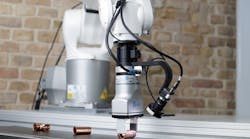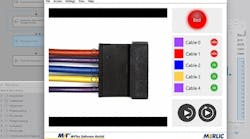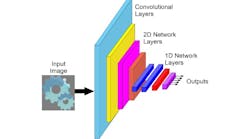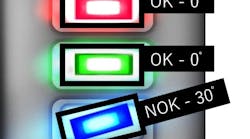Those unfamiliar with the history of image processing may wonder why machine-vision systems are not as sophisticated as thehuman visual system. Surely, if the systems were comparable to human vision, they could easily determine whether a part may be good or bad even under poor lighting conditions or where the surfaces may be complex.
Certainly, the human visual system, combined with human memory and reasoning, is highly advanced. From an early age, human beings can discern the color of objects, their size and shape, and whether objects may pose a threat. If advanced visual recognition systems could be emulated and combined with robotics, then one might argue that no programming would ever be required to perform even complex assemblies.
Unfortunately, this reasoning is flawed. Perfectly emulating the human visual system and cognition and reasoning processes may not be the ideal way to perform every machine-vision task. In the simplest vision system, it may be necessary to measure a part to an accuracy of ±0.001 in. Combined with even the least complex camera and illumination offerings, this measurement may easily be obtained by employing a sub-pixel-accurate edge detector commonly found in many software toolkits. The human visual system can perceive differences in the sizes of objects, but it certainly cannot discern the size of parts to that level of accuracy.
In other instances, the human visual system may outperform machine-vision systems. This is true when certain objects such as fruit may need to be classified. By understanding the nature of a "good" fruit compared to a less desirable one, human beings can rapidly classify these fruits even with subtle differences in play.
A machine-vision system may measure the dimensions, roundness, 3-D structure, and weight to make these comparisons. However, these measurements alone cannot determine the quality of the fruit. Many good and bad samples must be first acquired, their parameters measured, and the information fed to aneural network or support vector machine (SVM) to classify each fruit.
Luckily, a number of measurement and classification systems are now available to perform such tasks as you will read about on pages 9 ("Machine-vision software requires no programming") and 21 ("Sample-based Identification Eases Object Recognition Tasks") of this issue. These systems often need little or no programming to perform tasks, requiring only a number of samples to be presented to the system.
While these vision systems employ common algorithms to extract features and perform classification, they may only somewhat emulate the efficacy of the human visual system and cognition process. It is well known that the human visual system performs edge detection on images, but image understanding, classification, and reasoning are not as well understood.
Researchers are attempting to understand these complexities, hoping to develop more sophisticated machines that will one day behave more like human beings. However, for the machine-vision community, this may not matter. If today's available software tools work as advertised, then they will be deployed whether or not they emulate the human visual and cognition process.
[email protected]
Vision Systems Articles Archives





